De Bethune DB16 Tourbillon Regulator
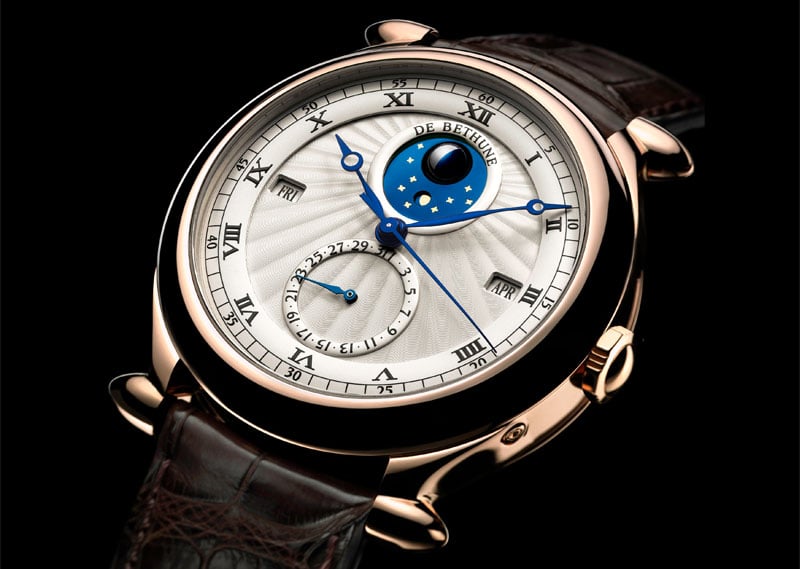
When De Bethune creates a new timepiece, it is always something special. Technically all De Bethune timepieces are peerless and mix cutting-edge technologies with classical watchmaking techniques. But also aesthetically they feature the same mix of high-tech and classical elements, required to create a De Bethune.
Whether we’re talking about the futuristic ergonomically shaped lugs of the DB27 Titan Hawk and the award-winning DB28, or the classical cone-shaped lugs of the DB10 that was released 2 years ago. The new DB16 Tourbillon Regulator features these same classic-looking cone-shaped lugs.

These cone-shaped lugs were introduced on De Bethune’s first model, the DB1 (see image below). Its movement was created by THA (Techniques Horlogères Appliquées), meaning it was actually created by François-Paul Journe, Vianney Halter, Christophe Claret and Denis Flageolet.
The latter started De Bethune together with David Zanetta in 2002 and they acquired the rights for this movement. This movement was also used in the two Cartier mono-poussoir chronographs from the Collection Privee Cartier Paris. Anyways, I’m drifting off, however the reason to tell this, is that this was the first timepiece that Denis Flageolet and David Zanetta created together. And it featured the very same classic-with-a-twist design.
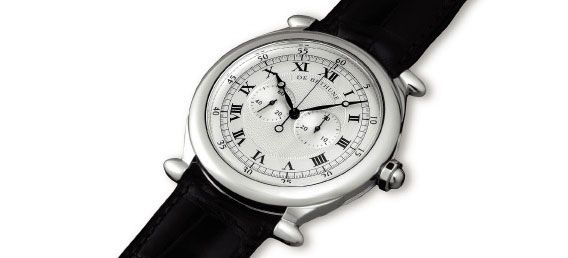
Now back to the new DB16! The combination of this, in my opinion, extraordinary attractive case combined with the patterns and finish of the DB16’s dial is simply superb. Again classic with a twist, as the sunburst guilloché motif is very classical and the raised “rings” on the dial add the twist.
The three central, curved, hand-polished and flame-blued steel hands indicate hours, minutes and seconds. The seconds hand is a jumping seconds that makes one jump every seconds, like on a quartz watch. This complication is also referred to as dead beat seconds or seconde morte in French. De Bethune has chosen to call it jumping seconds, because that suits good with the soft, steady beat of the seconds hand, which is something that connoisseurs will appreciate.
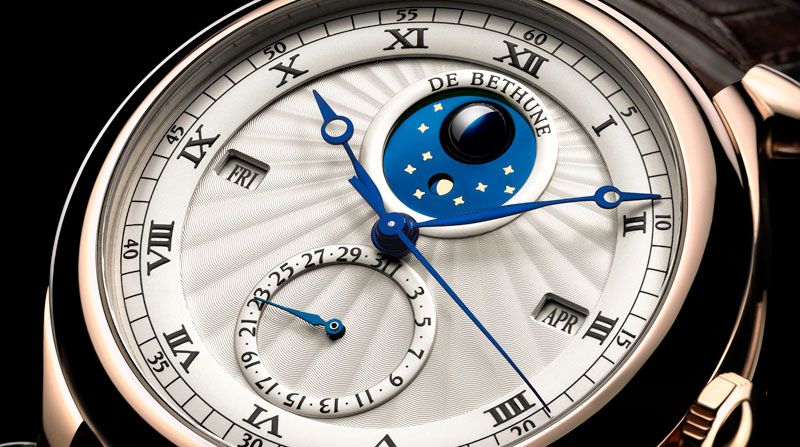
At the 6 o’clock position is the date, indicated with a small blued steel hand. The perpetual calendar’s date and day of the week are shown in apertures at the 3 and 9 o’clock position. At the 12 o’clock position is a spherical moon phase indicator and a leap year indicator is visible through a small aperture in the “starry night” surrounding the spherical moon.
Similarly classic with a twist is the movement, that can be admired through the sapphire crystal in the case back. All classic Haute Horlogerie (or Fine Watchmaking) techniques have been used to make caliber DB2509 as gorgeous as possible. However also typical for De Bethune is the triangle-shaped bridge that holds the two main spring barrels and on which the jumping seconds bridge (blue open-worked triangle) is mounted.
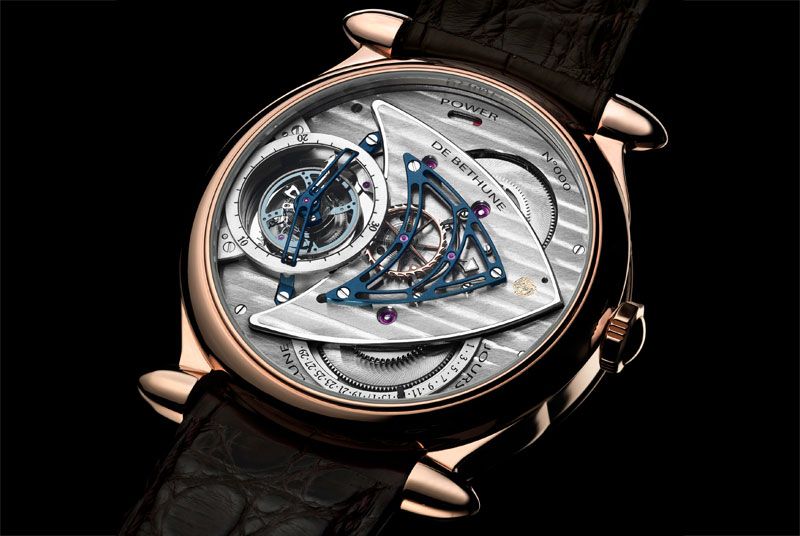
To the top you can see the word “power”, positioned just above an aperture that colors entirely red when winding is necessary. The self-regulating twin barrel ensures 4 days of constant power for the movement. The power is regulated by the 30-seconds silicon/titanium tourbillon that vibrates at a speed of 36,000 vph! This tourbillon is far from the ordinary, as it is one of the fastest and lightest in the watch industry, comprising 57 parts and weighing a total of just 0.18 grams.
This technical feat creates a strong contrast with the jumping seconds mechanism composed of a twin lever with four pallets driving two gold wheels with a spring connecting these two.
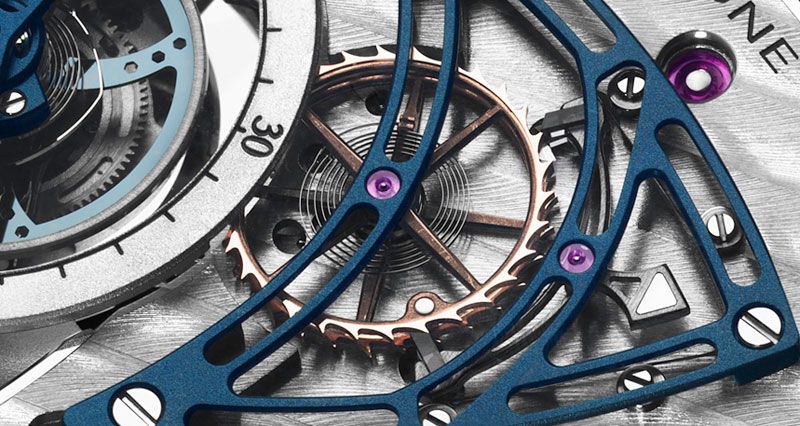
This jumping seconds bridge is a perfect example of the duality of De Bethune. It is mounted on a triangle shaped bridge, executed in German Silver that is hand-finished with Côte De Bethune (yes, they developed their own finishing-style) and chamfered edges; pure classical watchmaking. The jumping seconds bridge on the other hand is executed in flame-blued titanium, which is high-tech to the max.
The same thing can be said about the silicon/white gold balance wheel that is used in the classical complication that the tourbillon is. The movement, caliber DB2509, measures 30 mm in diameter and comprises 499 individual parts, entirely hand-crafted, hand-finished and hand-decorated.
A handy feature is the retrograde moon-phase indicator that facilitates setting the spherical moon to the exact date.
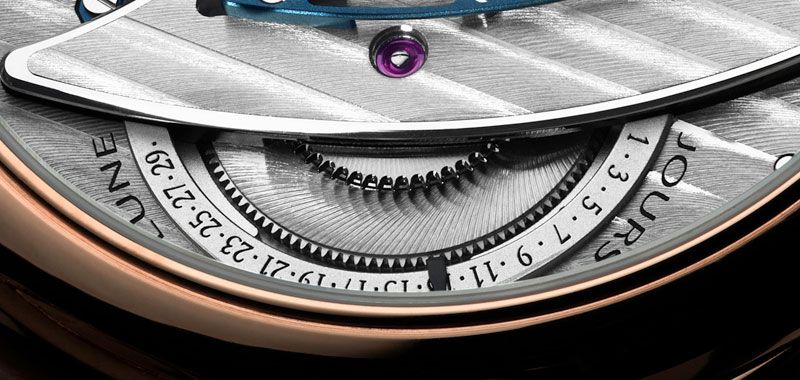
One last thing, that underlines the high-tech aspects of De Bethune even more, are the innovations and registered patents. In the DB16 Tourbillon Regulator you can find no less then seven patented innovations that can all be accredited to Denis Flageolet:
- Self-regulating twin barrel
- Silicon/white gold balance wheel – balance-spring with flat end curve
- De Bethune 30” silicon/titanium tourbillon, 36,000 vph
- Central jumping seconds
- Silicon escape wheel
- Spherical moon-phase indication
- Retrograde age of the moon indication
A few last words: Denis Flageolet masters both high-tech innovations and pure classical Fine Watchmaking. Combine this with David Zanneta’s design, which is an eclectic combination of classical and very forward, even futuristic, shapes and the result is De Bethune. To me it looks like a match made in heaven, horological heaven that is.
For more information, please visit the De Bethune website.
This article is written by Frank Geelen, executive editor for Monochrome Watches.



